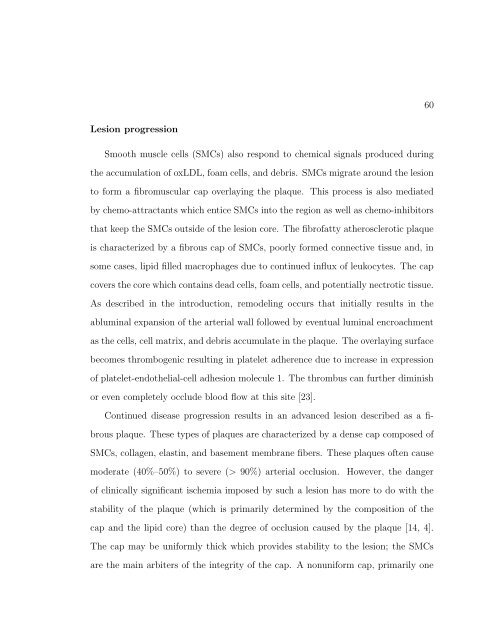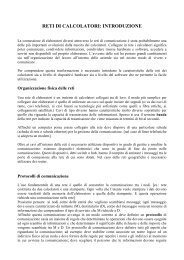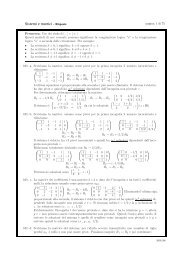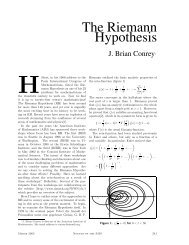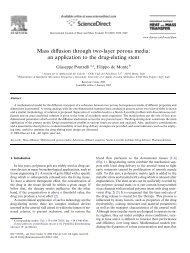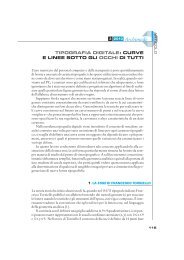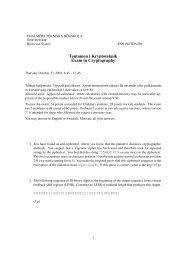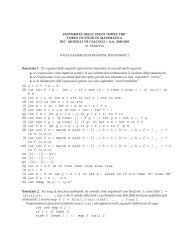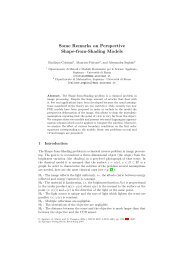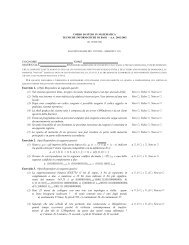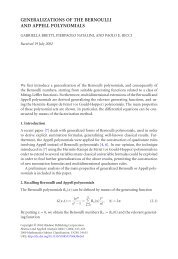A SHORT COURSE IN THE MODELING OF CHEMOTAXIS
A SHORT COURSE IN THE MODELING OF CHEMOTAXIS
A SHORT COURSE IN THE MODELING OF CHEMOTAXIS
Create successful ePaper yourself
Turn your PDF publications into a flip-book with our unique Google optimized e-Paper software.
Lesion progression<br />
Smooth muscle cells (SMCs) also respond to chemical signals produced during<br />
the accumulation of oxLDL, foam cells, and debris. SMCs migrate around the lesion<br />
to form a fibromuscular cap overlaying the plaque. This process is also mediated<br />
by chemo-attractants which entice SMCs into the region as well as chemo-inhibitors<br />
that keep the SMCs outside of the lesion core. The fibrofatty atherosclerotic plaque<br />
is characterized by a fibrous cap of SMCs, poorly formed connective tissue and, in<br />
some cases, lipid filled macrophages due to continued influx of leukocytes. The cap<br />
covers the core which contains dead cells, foam cells, and potentially nectrotic tissue.<br />
As described in the introduction, remodeling occurs that initially results in the<br />
abluminal expansion of the arterial wall followed by eventual luminal encroachment<br />
as the cells, cell matrix, and debris accumulate in the plaque. The overlaying surface<br />
becomes thrombogenic resulting in platelet adherence due to increase in expression<br />
of platelet-endothelial-cell adhesion molecule 1. The thrombus can further diminish<br />
or even completely occlude blood flow at this site [23].<br />
Continued disease progression results in an advanced lesion described as a fi-<br />
brous plaque. These types of plaques are characterized by a dense cap composed of<br />
SMCs, collagen, elastin, and basement membrane fibers. These plaques often cause<br />
moderate (40%–50%) to severe (> 90%) arterial occlusion. However, the danger<br />
of clinically significant ischemia imposed by such a lesion has more to do with the<br />
stability of the plaque (which is primarily determined by the composition of the<br />
cap and the lipid core) than the degree of occlusion caused by the plaque [14, 4].<br />
The cap may be uniformly thick which provides stability to the lesion; the SMCs<br />
are the main arbiters of the integrity of the cap. A nonuniform cap, primarily one<br />
60


